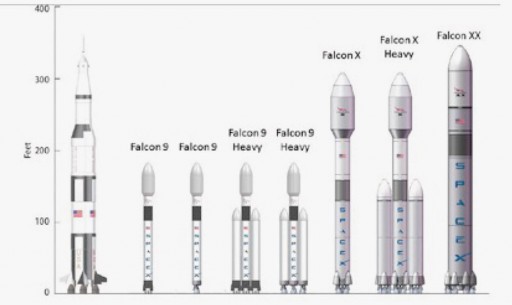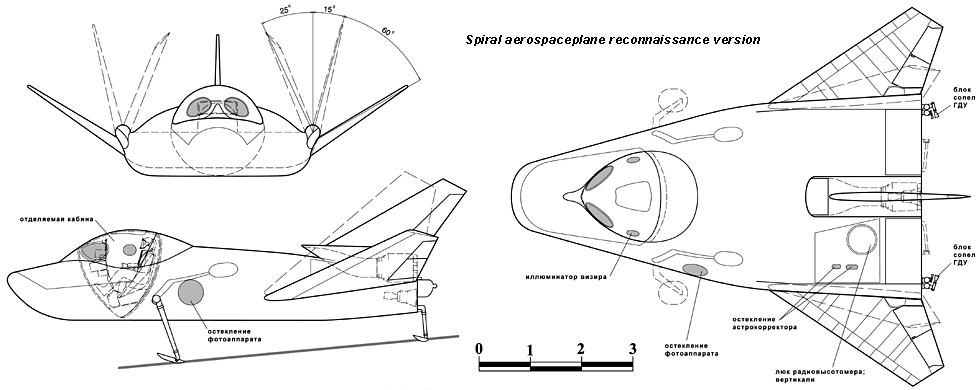New Mars Forums
You are not logged in.
- Topics: Active | Unanswered
Announcement
#1 2017-07-19 19:03:32
- Oldfart1939
- Member
- Registered: 2016-11-26
- Posts: 2,488
SpaceX drops plans for propulsive Dragon landings
Turns out that SpaceX overestimated their current abilities for propulsive landing return to Earth of astronauts with the Dragon 2 vehicle. They also are backing away from the gigantic Interplanetary Transport System and are now looking at a smaller vehicle.
Offline
Like button can go here
#2 2017-07-19 20:10:36
- SpaceNut
- Administrator
- From: New Hampshire
- Registered: 2004-07-22
- Posts: 29,917
Re: SpaceX drops plans for propulsive Dragon landings
Deletion of landing legs to create a common landing design for all capsules in use. The super draco's may still be there buts its now dead mass if we do not need them once reaching abort levels on the way to orbit.
He is also looking now at the engine count as being an issue if they do not function for the triple common core heavy lift.
Offline
Like button can go here
#3 2017-07-19 20:41:44
- Oldfart1939
- Member
- Registered: 2016-11-26
- Posts: 2,488
Re: SpaceX drops plans for propulsive Dragon landings
IMHO, he will do a fallback to the previously postulated Falcon X design for a Mars vehicle. The ITS was a "rocket too big." And also too expensive! Using a 27 engine design for the Falcon Heavy might have also been a bit too optimistic. Wonder about using SRBs for the boosters?
Last edited by Oldfart1939 (2017-07-19 20:42:21)
Offline
Like button can go here
#4 2017-07-19 23:02:30
- RobertDyck
- Moderator
- From: Winnipeg, Canada
- Registered: 2002-08-20
- Posts: 8,296
- Website
Offline
Like button can go here
#5 2017-07-20 01:31:35
- kbd512
- Administrator
- Registered: 2015-01-02
- Posts: 8,349
Re: SpaceX drops plans for propulsive Dragon landings
Oldfart1939,
I still think the ITS is the way to go, but using RS-25 powered upper stages to reduce the propellant mass and thus vehicle structural mass. 1,500t is not an inconsequential mass savings for the same performance from a vehicle of the same size. It's more than the GLOW of a Falcon Heavy rocket, or 60% of the mass of the original Raptor-powered upper stage.
Offline
Like button can go here
#6 2017-07-20 06:29:12
- Oldfart1939
- Member
- Registered: 2016-11-26
- Posts: 2,488
Re: SpaceX drops plans for propulsive Dragon landings
I unfortunately don't have the original transcript of the recent statement by Elon Musk, or perhaps we could figure where they are going with this in the future. I guess he'll be making another presentation in about a month or 2.
Offline
Like button can go here
#7 2017-07-20 08:28:26
- Oldfart1939
- Member
- Registered: 2016-11-26
- Posts: 2,488
Re: SpaceX drops plans for propulsive Dragon landings
Here's what spaceflight101 has to say about the new SpaceX developments:
http://spaceflight101.com/spacex-cuts-p … n-landing/
The "next step" according to Musk, will be a vehicle smaller that the ITS, but not by a lot....
Here is reference to some of the earlier design concepts presented by SpaceX:
http://spaceflight101.com/spacex-launch … s-designs/
My suggestion for them is something the size and performance capability of the Falcon X or the Falcon XX. This is absolutely necessary for them to avoid bankrupting the company on a fanciful, too big design. Musk himself, has said it has to be financially viable in order to generate revenue.
Last edited by Oldfart1939 (2017-07-20 08:50:12)
Offline
Like button can go here
#8 2017-07-20 17:03:18
- SpaceNut
- Administrator
- From: New Hampshire
- Registered: 2004-07-22
- Posts: 29,917
Re: SpaceX drops plans for propulsive Dragon landings
I hope after the trial run of the triple barrel that Musk switches over quickly to using the rapture methan/ lox system on a single core with wider diameter. Basically a upgraded falcon 9....
Offline
Like button can go here
#9 2017-07-20 18:25:08
- Oldfart1939
- Member
- Registered: 2016-11-26
- Posts: 2,488
Re: SpaceX drops plans for propulsive Dragon landings
SpaceNut-
The earlier proposed Falcon X was reported to have a diameter of 6 meters. Building anything any larger is fraught with difficulty; not to mention moving it to the launch pad, etc. The methylox fuel combination is better than RP-1 & LOX, but still has a lower Isp and Id than Aerozine-50 & LOX.
Offline
Like button can go here
#10 2017-07-20 22:47:09
- RobertDyck
- Moderator
- From: Winnipeg, Canada
- Registered: 2002-08-20
- Posts: 8,296
- Website
Re: SpaceX drops plans for propulsive Dragon landings
Why 6 metres? Shuttle had an ET that was 8.4 metre diameter, and the SLS core stage is the same. ET was transported horizontally by barge from Michoud in Louisiana to KSC. The Russian space shuttle Buran was launched on Energia; it's core stage was 7.8 metre diameter. Energia was transported to the launch pad horizontally, erected at the pad. So what's magical about 6 meters?
Offline
Like button can go here
#11 2017-07-21 06:12:14
- Antius
- Member
- From: Cumbria, UK
- Registered: 2007-05-22
- Posts: 1,003
Re: SpaceX drops plans for propulsive Dragon landings
Have I correctly understood what Musk has said here?
Without propulsive landings there will be no Mars landings. Unless the lander weighs considerably less than 1 tonne, which isn't practical for any manned landing.
Offline
Like button can go here
#12 2017-07-21 07:05:00
- Oldfart1939
- Member
- Registered: 2016-11-26
- Posts: 2,488
Re: SpaceX drops plans for propulsive Dragon landings
Robert-
Nothing magical about 6 meters, but SpaceX is dedicated to reuse of the boosters. I can see them building something bigger in the future, but this needs to be evolutionary design, and not the quantum leap implied by the ITS. The current Falcon 9 v 1.2+ is 3.7 meters in diameter with a payload faring diameter of 5 meters. This to me indicates that the Falcon X would be very suitable for the Mars Direct booster. Using a linear scale-up, this means that a habitat diameter could be 8.1 meters in diameter or 26.6 feet. That's "getting there."
Offline
Like button can go here
#13 2017-07-21 07:08:44
- Oldfart1939
- Member
- Registered: 2016-11-26
- Posts: 2,488
Re: SpaceX drops plans for propulsive Dragon landings
No one really knows what Elon is thinking at this juncture--possibly not even Elon. He seems to have been referring to the first Dragon 2 capsules, with guarded comments about evolutionary design changes as time passes. It could reflect the weight penalties surrounding the heat shield design and the weight of the extension apparatus? We are all in the dark here.
Last edited by Oldfart1939 (2017-07-21 07:13:55)
Offline
Like button can go here
#14 2017-07-21 09:36:13
- GW Johnson
- Member
- From: McGregor, Texas USA
- Registered: 2011-12-04
- Posts: 6,104
- Website
Re: SpaceX drops plans for propulsive Dragon landings
I'd hazard the guess that two things converged to change his crew Dragon landing plans. NASA wouldn't accept doing anything they had never done before without doing years of exhaustive and expensive tests that he didn't anticipate, and they wouldn't pay for that testing.
I rather doubt that landing legs through the heat shield is that serious an issue. Openings in the heat shield were flight tested as OK back in 1969 with the re-flown Gemini on the USAF MOL program. It had a personnel hatch cut through the heat shield. All you have to do is seal off the space behind the opening to prevent through-flow. In this case the opening was the ring-shaped cut around the chunk of heat shield on the hatch. But you can do this with wide-open holes, too.
Musk will have to do propulsive landings with Red Dragon at Mars. That thing is 6-8 tons at entry. We already know from JPL's experience that the standard parachute methods drive you to increasingly Rube Goldberg designs as you approach 1 ton at entry. Much beyond that, and the Rube Goldberg aspect will drive toward unreliability, resulting in more probability of a crash than a landing. Talk of reverting to parachutes for landing things 5 tons and up on Mars is nonsense, and NASA knows that, stupid as they sometimes appear to be, otherwise.
I rather suspect that Musk re-thinking the giant rocket is being driven by the practical difficulties of safely lighting-off and operating a large cluster of rocket engines. They seem to be running into this with Falcon-Heavy, and that may well be the driver for the delays, not just beefing up the core structurally to hold the two strap-ons. This is the old Russian N-1 moon rocket 30-ish engine cluster problem rearing its ugly head again. It's a very real problem, and has been since the 1960's. Von Braun avoided it by developing much larger rocket engine units. Korolev/Mishin were unable to do that.
Speculations on my part, but then I have been watching this game since the old rocket plane tests and liquid ICBM tests of the 1950's.
GW
Last edited by GW Johnson (2017-07-21 09:39:13)
GW Johnson
McGregor, Texas
"There is nothing as expensive as a dead crew, especially one dead from a bad management decision"
Offline
Like button can go here
#15 2017-07-21 09:55:58
- RobertDyck
- Moderator
- From: Winnipeg, Canada
- Registered: 2002-08-20
- Posts: 8,296
- Website
Re: SpaceX drops plans for propulsive Dragon landings
I agree. They need something between Falcon 9 Heavy (now called simply Falcon Heavy) and MCT/ITS. In 2010 they gave a presentation of speculative new rockets. Falcon X Heavy is the perfect size for Mars Direct. Ah, I see, Falcon X has a 6 metre diameter. I've pointed out MCT will require habitats and life support for all 100 settlers before they show up. And MCT will require ISPP and a propellant depot before it shows up. So Mars Direct or something like it to prepare for the first MCT.
Falcon X would use a new engine, called Merlin 2. Still with RP1/LOX but significantly larger than Merlin 1D currently used. It's about the size of the F-1 engine used on the first stage of Saturn V. Merlin 2 100% thrust would be 5,340 kN at sea level, F-1 engine used for Apollo 4, 6 and 8 on produced 1.5 million pounds thrust at sea level (6,700 kN). F-1 used for Apollo 9 on produced 1.522 million pounds (6,770 kN).

Last edited by RobertDyck (2017-07-21 09:56:52)
Offline
Like button can go here
#16 2017-07-21 10:18:58
- RobertDyck
- Moderator
- From: Winnipeg, Canada
- Registered: 2002-08-20
- Posts: 8,296
- Website
Re: SpaceX drops plans for propulsive Dragon landings
We already know from JPL's experience that the standard parachute methods drive you to increasingly Rube Goldberg designs as you approach 1 ton at entry. Much beyond that, and the Rube Goldberg aspect will drive toward unreliability, resulting in more probability of a crash than a landing. Talk of reverting to parachutes for landing things 5 tons and up on Mars is nonsense, and NASA knows that, stupid as they sometimes appear to be, otherwise.
Again, I'm going to argue for Mars Direct. Robert Zubrin and his partner David Baker noticed one NASA researcher was working ADEPT. That's a carbon fibre heat shield that opens like an umbrella. That increases surface area to deal with the cube-square problem. Modern documents on ADEPT state they can land 40 metric tonnes on Mars, and total launch mass is less than propulsive landing.
I rather suspect that Musk re-thinking the giant rocket is being driven by the practical difficulties of safely lighting-off and operating a large cluster of rocket engines. They seem to be running into this with Falcon-Heavy, and that may well be the driver for the delays, not just beefing up the core structurally to hold the two strap-ons. This is the old Russian N-1 moon rocket 30-ish engine cluster problem rearing its ugly head again. It's a very real problem, and has been since the 1960's. Von Braun avoided it by developing much larger rocket engine units. Korolev/Mishin were unable to do that.
I saw a recent video on YouTube about this. That presenter claimed the Soviets didn't have industrial capacity to build an engine as large as F-1. But the did have technology for a closed-cycle rocket engine, which had greater efficiency than open cycle used for F-1. So they used a large number of small but efficient engines. They had a major problem providing propellant to 30 engines: 24 engines in a ring, plus 6 inner engines. Yes, I suspect ITV will have the same problem.
Last edited by RobertDyck (2017-07-21 11:00:34)
Offline
Like button can go here
#17 2017-07-21 10:51:15
- GW Johnson
- Member
- From: McGregor, Texas USA
- Registered: 2011-12-04
- Posts: 6,104
- Website
Re: SpaceX drops plans for propulsive Dragon landings
The foldable and inflatable heat shield ideas certainly deserve lots of development. Somehow these need to be brought from "being worked on"/feasibility demo status to "ready-for-general-application" status. There's light years of work between the two. But not much funding.
Both are decreasers of ballistic coefficient, allowing much heavier weights to be decelerated barely subsonic with chutes on Mars. There are practical size limits to the Mach 2-to-2.5 ringsail chute you can deploy. So there are still mass-landed limits to this kind of technology. I don't believe those limits are yet known, so I am wary of 40-tons-landed projections. In any event, the final touchdown is still propulsive, like it has always been, except for only the two airbag demonstrations.
GW
Last edited by GW Johnson (2017-07-21 10:52:33)
GW Johnson
McGregor, Texas
"There is nothing as expensive as a dead crew, especially one dead from a bad management decision"
Offline
Like button can go here
#18 2017-07-21 10:57:00
- RobertDyck
- Moderator
- From: Winnipeg, Canada
- Registered: 2002-08-20
- Posts: 8,296
- Website
Re: SpaceX drops plans for propulsive Dragon landings
Oldfart1939,
Further speculation. SpaceX has developed their Raptor engine, but not Merlin 2. Their chart from 2010 shows Falcon XX with 6 Merlin 2 engines, or 9 Raptor engines. Raptor thrust at sea level is 3,050 kN so they should be able to build Falcon X with 6 Raptor engines. Based on thrust I calculate 5.25 engines, but you can't have a fraction of an engine. However, LCH4/LOX has higher Isp than RP1/LOX. Their design for Falcon XX has 9 engines instead of 6, so 50% more engines. Raptor is more powerful than Merlin 1D, but less than Merlin 2. So that would imply 4.5 Raptor engines for Falcon X. Again, you can't have a fraction of an engine, so round up to 5. Falcon 9 already has propellant feed for 9 engines, so they should be able to do 5 or 6 engines.
Offline
Like button can go here
#19 2017-07-21 11:01:47
- GW Johnson
- Member
- From: McGregor, Texas USA
- Registered: 2011-12-04
- Posts: 6,104
- Website
Re: SpaceX drops plans for propulsive Dragon landings
I dunno that a rocket much bigger than Falcon-Heavy is really necessary at all to go to Mars. Not with orbital assembly from docked modules available.
Shooting things direct to Mars does not depend on not stopping in orbit. In point of fact, you get better and wider windows in which to do things, if you do depart from Earth orbit instead of the surface.
As launch prices continue to drop, orbital assembly and departure are really starting to look the most attractive of all, just as they did in the late 1940's and early 1950's, before we knew very much about flying vehicles like this.
What goes around, comes around.
GW
Last edited by GW Johnson (2017-07-21 11:02:52)
GW Johnson
McGregor, Texas
"There is nothing as expensive as a dead crew, especially one dead from a bad management decision"
Offline
Like button can go here
#20 2017-07-21 11:39:26
- Oldfart1939
- Member
- Registered: 2016-11-26
- Posts: 2,488
Re: SpaceX drops plans for propulsive Dragon landings
It seems as though we're all on the same track, or at least converging towards the same concept. If anyone cares to go back to some of my previously suggested architectures, they will find my arguing for the Falcon X size as being ideal in the Mars Direct concept. I don't think that anything larger makes much sense other than to ULA/Lockheed-Martin/Boeing and the cost plus accounting model fans. My sketch designs included 7 of the new Raptor engines in the first stage, by the way. That way they would not have to be operated at 100% capacity for prolongation of engine life. The "3-barrel approach," the Falcon X heavy, could really get the ball rolling and possibly in less time than we might imagine. As GW has stated above, the real problems are engine and fuel system related, and the aerodynamic components would be scaled up monococque construction similar to the Falcon 9 series. How hard is it to scale up a cylinder? Much harder than we suspect!
Offline
Like button can go here
#21 2017-07-21 11:42:45
- Oldfart1939
- Member
- Registered: 2016-11-26
- Posts: 2,488
Re: SpaceX drops plans for propulsive Dragon landings
As a separate post, as something of an addendum to my previous, this would neatly serve as the "proof of concept' that I've harped on for demonstrating the new engine technologies. The included second stage architecture would, at least in my view, be better served with a combination of Aerozine-50 and LOX, or NTO than with semi-cryogenic propellants.
Offline
Like button can go here
#22 2017-07-21 13:03:03
- RobertDyck
- Moderator
- From: Winnipeg, Canada
- Registered: 2002-08-20
- Posts: 8,296
- Website
Re: SpaceX drops plans for propulsive Dragon landings
GW Johnson,
Well... Ok. I first proposed my modified version of Mars Direct at the Mars Society convention in 2002. At that time the majority of attendees wanted Mars Direct with no modification what so ever. Some people agreed with 3 Energia launches instead of 2 Ares launches, but that was because Robert Zubrin himself described that in his book. Now people are more willing to accept alternatives.
Yet another Mars architecture was a thread started by someone else, but unfortunately I hijacked the thread. I call my architecture "Mars Orbit Rendezvous" because the Apollo architecture was called "Lunar Orbit Rendezvous". I modified Mars Direct with ideas from Apollo and NASA's Design Reference Mission aka Mars Semi-Direct. One individual asked Dr. Zubrin about my architecture, he reported Dr. Zubrin called my plan "Hybrid Direct". I'm flattered he bothered to give it a name.
My Mars architecture reuses the interplanetary transit vehicle (ITV), using aerocapture at each planet, parking at ISS between missions. I came up with various configurations, the last one was...
First mission:
1 SLS Block 2B for MAV (direct launch from KSC to Mars surface)
1 SLS Block 2B for lab & pressurized rover (direct launch)
1 Falcon 9 v1.2 for ITV
1 Falcon Heavy for TMI stage
1 Falcon 9 for lander & unpressurized rover
1 Falcon 9 for Dragon
Subsequent missions:
1 SLS Block 2B for MAV
1 Falcon Heavy for TMI stage
1 Falcon 9 for lander & unpressurized rover
1 Falcon 9 for Dragon
The Falcon 9 v1.2 (aka Full Thrust) to deliver the ITV would not be recoverable. Not sure if the Falcon Heavy would have recoverable core stages; depends on mass of the TMI stage, and lift capacity of Falcon Heavy in recoverable configuration. Certain individuals in Congress may insist on using SLS, but if SpaceX wants to use all their equipment, you could replace each SLS block 2B with 3 Falcon Heavy launches and assemble in LEO. With 3 Falcon Heavy launches, not just 2, you should be able to recover core stages.
I have posted elsewhere a lunar architecture. First lunar mission:
1 SLS block 2B for surface habitat. Identical to Mars lander/habitat with long duration life support, inflatable greenhouse, unpressurized rover, surface science instruments.
1 Falcon Heavy (recovered core stages) for Lunar Module, parked in lunar orbit
1 Falcon Heavy (recovered core stages) for Dragon, trunk with propellant tank feeding back to Dragon SuperDracos for TEI, new stage for Lunar Orbit Insertion and to deorbit the Lunar Module (crasher stage)
Subsequent lunar missions:
1 Falcon Heavy (recovered core stages) for Dragon, trunk with propellant tank, and crasher stage. However, the crasher stage would also transfer propellant and breathing oxygen to the Lunar Module.
So the lunar mission prepares for Mars. Mars missions prepare to receive MCT.
Offline
Like button can go here
#23 2017-07-21 13:50:47
- Oldfart1939
- Member
- Registered: 2016-11-26
- Posts: 2,488
Re: SpaceX drops plans for propulsive Dragon landings
Robert & GW-
Just another thought: if the Falcon 9 booster stages become "throwaways," they either need to be re-flown vehicles, or possibly be replaced by SRBs. I haven't any idea how expensive Falcon 9 equivalent SRBs might be, relative to the ~ $17 million often quoted for the Falcon 9 first stage. This could also reduce the complexity of the Falcon Heavy and the problems associated with lighting off 27 Merlin D-2 engines all at once!
Added as an edit: The most expensive components flown in the Falcon 9 are the 9 engines at ~ $2 million apiece. Then comes the avionics package required to re-land the booster stages. If they are throwaways, those avionics could be absent, since the entire vehicle is controlled through the upper stage guidance package.
Last edited by Oldfart1939 (2017-07-21 14:25:57)
Offline
Like button can go here
#24 2017-07-21 21:02:43
- RobertDyck
- Moderator
- From: Winnipeg, Canada
- Registered: 2002-08-20
- Posts: 8,296
- Website
Re: SpaceX drops plans for propulsive Dragon landings
Oldfart1939,
You want to use SRBs on a new crew launch vehicle? Atlas V works because it's solids are one piece; no O-rings, no segment seals. We really don't want another vehicle with O-rings right beside a fuel tank. Falcon 9 uses RP1 instead of LH2, which is less volatile, but it'll still ignite once the thin aluminum alloy tank is burned through by a torch from an O-ring breach.
And would solids from ATK really be less expensive? Everything about Shuttle became insanely expensive. I found one forum that claimed Astronautix.com cites Shuttle SRB as $23 million for 11,000 kN thrust. I haven't been able to find it in there. The final configuration of Shuttle, each SRB provided 12,500 kN thrust at sea level. Ares I-X project cost was $445 million, although per-launch cost of Ares I was estimated at $138 million if flown multiple times per year. It would cost $1 billion if only flown once per year. So it's hard to estimate cost, but I really don't think it would reduce cost.
SpaceX is saying Falcon Heavy with recovered core stages will cost $90 million per launch. Or $130 million if all expendable. That's only $40 million difference, and that's with all 3 core stages discarded.
Offline
Like button can go here
#25 2017-07-22 07:59:48
- Oldfart1939
- Member
- Registered: 2016-11-26
- Posts: 2,488
Re: SpaceX drops plans for propulsive Dragon landings
Do we have any data from Orbital ATK w/r to the launches of their Antares rockets?
Previous posts from GW seem to indicate that the segmented boosters would not be problematic if NASA kept their noses out of the designs?
We could also conceptualize a Falcon 9 "Semi-Heavy," by using the Atlas-style single casting SRBs, by using 2 of them to boost the payload capacity of Falcon 9. That would be an eclectic combination of existing components.
Offline
Like button can go here




